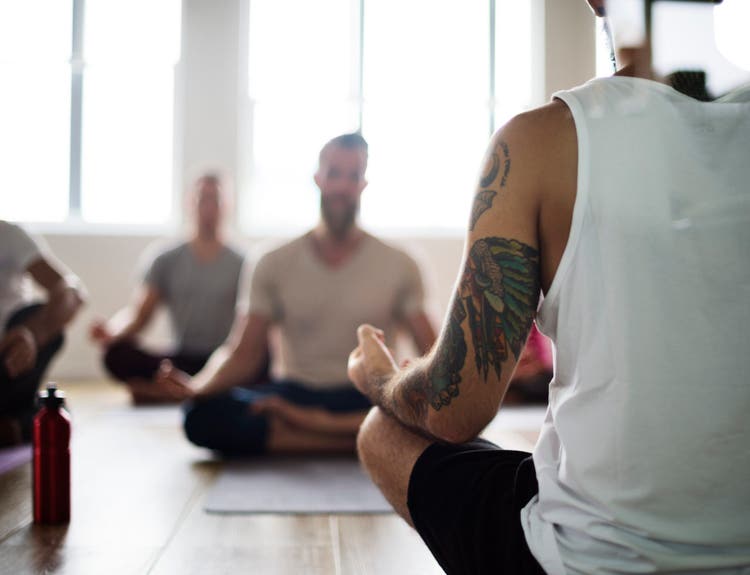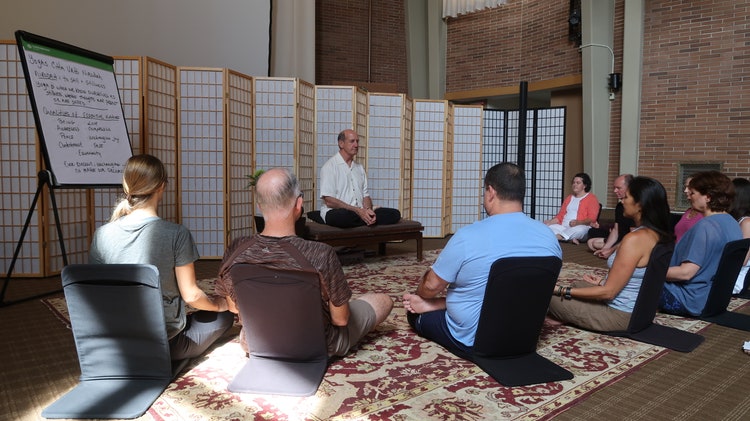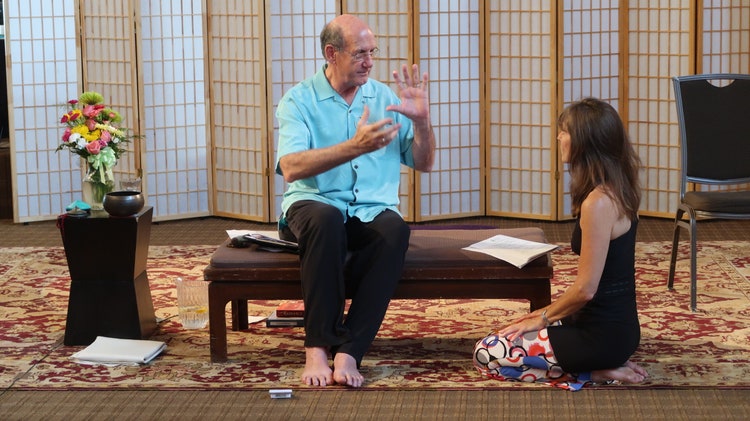Richard Miller: Sharing Manna for Life

Richard Miller, Ph.D., knows that the recipe for a fulfilling life requires nourishing the body, mind and spirit. But while many people are diligent about exercise and nutrition, few are focused on feeding consciousness. The result is that many people are starving—for connection, contentment and emotional well-being.
Miller is a clinical psychologist, author, yogi and founder of the iRest Institute, a Bay Area–based organization devoted to helping people replace life’s pain and suffering with healing and peace. Through a practice called iRest Yoga Nidra, Miller has taught thousands of people how to meditate, address trauma and nurture their ability to claim happiness as their birthright.
Miller has spent decades refining iRest Yoga Nidra and researching its efficacy on health and healing in diverse populations, including active-duty soldiers, veterans, college students, children, seniors, the homeless, the incarcerated and people experiencing sleep disorders, post-traumatic stress disorder, chemical dependency, chronic pain and other related disorders.
24Life recently spoke to Miller to discuss the origin and the benefits of iRest Yoga Nidra, including the attainment of what he calls “an unchanging, indestructible sense of well-being.”
Becoming a Sherpa for Self-Discovery

The Chinese philosopher Lao Tzu said, “Silence is a source of great strength,” and was in silence that Miller first met his inspiration for iRest Yoga Nidra while taking a class in San Francisco in 1970.
“I was a newcomer to the city, so I decided to take a yoga class in order to meet people—coincidentally, it was taught in silence, so I didn’t actually meet anyone,” he says. “But at the end of the physical part of the class, the teacher led us into a meditative state called yoga nidra. The experience was so transformative that I began learning more about it, conducting research and eventually adapting my findings into a practice I shared with my patients.”
In the early days, Miller continued to call his form of meditation yoga nidra—“yoga,” meaning our ability to recognize and embody our interrelatedness, with ourselves and life in general, and “nidra,” meaning sleep, which is representative of a change in consciousness. But in 2004, a call from Walter Reed Army Medical Center led Miller to re-brand his approach.
“I was asked to participate in a study with active-duty military who had post-traumatic stress from the Afghanistan and Iraq wars, and I was asked to rename the program because as one Marine said, ‘Yoga is for sissies. We’re military—we don’t do yoga.’ So I came up with the name Integrative Restoration because it combines the psychology of self with the restoration of well-being. And since the iPhone and iPad were popular then, I shortened it to iRest,” he says.
IRest Yoga Nidra combines traditional yogic practice with Western psychology and neuroscience. It teaches people how to work with emotions, beliefs, body sensations, pain and anxiety in a way that recognizes those elements, integrates them into the students’ experience, and transforms them into energy that helps them to become healthier human beings.
Practicing Healthy Hygiene Every Day
Many people think of meditation as a luxury or an indulgence—something to be done in between the many responsibilities and chores of life. But Miller views meditation as “healthy hygiene,” an activity as vital and life-sustaining as food and water.
“Meditation is manna for life,” Miller says. “And just as food feeds a healthy body, so too meditation acts as fuel to power one’s best life.”
Recognizing the reality of today’s hyperactive, multitasking world, Miller has adapted iRest Yoga Nidra so that busy people can practice it in “bite-size” portions. The program contains 10 core steps, encompassing elements such as clarifying intention, identifying a sense of purpose, restoring a sense of well-being, and identifying and using feelings as tools to productively respond to events. IRest Yoga Nidra classes consist of a 30-minute regimen that can be broken down into these component parts so they can be applied to specific situations, during stressful moments or simply as replenishment—in fact, Miller often takes a 12-minute iRest Yoga Nidra “nap” to revive himself on days when he teaches.
As with any other positive habit, consistency improves conditioning, so Miller incorporates iRest Yoga Nidra into his morning and evening routine.
“Every morning, depending on my schedule, I do a 20- to 50-minute meditation. I focus on a sense of wholeness and well-being, and then I scan my body for any leftover tension. Are there any emotions or thoughts that require my attention? If so, I address them, and if not, I spend the remainder of the time nourishing a sense of joy and wholeness—reinforcing the unchanging, indestructible sense of well-being [that] carries me through the day, and I repeat this process at night so I fall asleep in a peaceful state. This quality of mind is what we’re trying to help people shift to during the practice—it’s more consistent, creative, energetic and intelligent.”
Miller also augments the positive benefits of his mental workouts with the healing effects of nature, participating in a variety of outdoor activities such as hiking, kayaking, mountain biking and swimming.
Healing the World, One Mind at a Time

Despite the fact that iRest Yoga Nidra has improved the lives of thousands of people, Miller is not content to limit the benefits to individuals. Rather, he sees the role of yoga teachers and healers as social change agents who can help spread global healing—not only by what they teach but also through the manner in which they exist in the world.
“I was at a conference a couple of years ago, minding my own business, and this person came up to me and said, ‘I don’t know what it is you got, but I want some of it. How do I get it?’ That has happened to me on several occasions,” he says. “I think being peace, people begin to feel peace, whether we are trying to intentionally communicate that or not.”
“There’s a beautiful line from the Upanishads that says, ‘Wherever we project or see another, there will be fear or anxiety.’ That sense of separation is what’s driving so much fear in the world today, so in the practice, we’re trying to strip away the fear by helping people realize that everyone around me is actually myself in another form. Healers help people connect to themselves and to see themselves in each other—that’s what’s so exciting!”
Photo credit: Rawpixel Ltd, Thinkstock